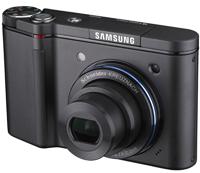A radical new camera system in which lens-plus-sensor modules are changed via a slide-in mounting.Ricoh has unleased a design revolution with its new GXR system. It’s the first camera body that accepts interchangeable sensor-plus-lens modules, allowing buyers to choose the body/lens combination that suits them and providing a camera system with great flexibility for upgrading and expansion.










